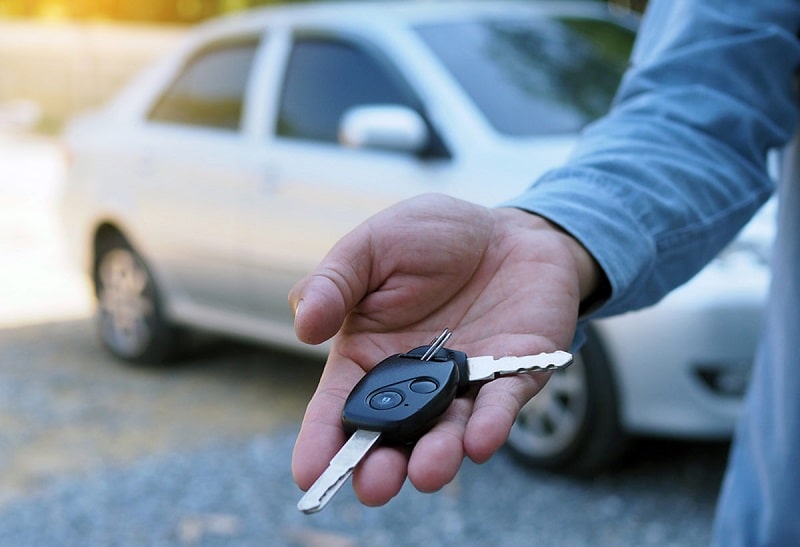Buying your first used car can be an exciting and nerve-wracking experience. There are many factors to consider, such as price, reliability, and maintenance costs. It’s important to do your research and be prepared before making a decision. In this blog post, we will explore the truth about buying a first used car in the next 60 seconds. We will cover everything from finding the right car to negotiating the best price. So, let’s get started!
Research, Research, Research
The first step in buying a used car is to do your research. You need to find out what type of car you want, what features are important to you, and how much you are willing to spend. Use the internet to read reviews, compare different models, and check the market value of the cars you are interested in. This information will give you a good starting point for your search.
Set a Budget
Before you start looking at cars, it’s important to set a budget. Determine how much you can afford to spend on a used car and stick to it. Consider the price of the car, as well as additional costs such as insurance, registration, and maintenance. It’s easy to get carried away when car shopping, so having a budget will help you stay focused and make the right decision.
Find a Reliable Seller
When buying a used car, it’s crucial to find a reliable seller. There are many options available, such as dealerships, private sellers, and online platforms. Each option has its pros and cons, so it’s important to carefully consider which one is right for you.
Dealerships offer a wide selection of used cars, often with warranties and certifications. While they may be more expensive, you can have peace of mind knowing that the car has been thoroughly inspected. Private sellers may offer lower prices, but you need to be cautious and ensure that the car is in good condition. Online platforms, such as classified ads and auction websites, can be a convenient option, but you need to do your due diligence and thoroughly research the seller.
Thoroughly Inspect the Car
Once you find a potential car, it’s time to inspect it thoroughly. Even if the seller claims that the car is in perfect condition, it’s important to check for any signs of damage or wear. Start by looking at the exterior of the car for any dents, scratches, or rust. Inspect the tires for tread depth and signs of uneven wear. Open the doors and check the interior for any tears, stains, or unusual odors.
Next, check under the hood for any signs of leaks, corrosion, or worn-out parts. Ask the seller for maintenance records and check if the car has been regularly serviced. Take the car for a test drive and pay attention to how it handles, accelerates, and brakes. If anything feels off or if you notice any strange noises, it’s best to move on and keep looking.
Get a Vehicle History Report
One of the most important steps in buying a used car is getting a vehicle history report. This report will provide you with valuable information about the car’s past, including accidents, repairs, and ownership history. You can obtain a vehicle history report from companies like Carfax or AutoCheck by providing the car’s VIN (Vehicle Identification Number).
A clean vehicle history report doesn’t guarantee that the car is in perfect condition, but it can give you peace of mind knowing that it hasn’t been involved in any major accidents or had significant damage.
Take It to a Mechanic
Even if the car seems to be in good condition, it’s always a good idea to take it to a mechanic for an inspection. A professional mechanic can identify any hidden issues that may not be apparent during a visual inspection. They can check the car’s engine, transmission, suspension, brakes, and other critical components.
While a mechanic’s inspection may come with an additional cost, it can potentially save you from buying a lemon and help you make an informed decision.
Negotiate the Price
When it comes to buying a used car, negotiation is key. Don’t be afraid to negotiate the price with the seller. Use the information you gathered during your research, such as the market value of the car and any identified issues, to negotiate a fair price.
Start by offering a lower price and be prepared to walk away if the seller is not willing to negotiate. Remember, there are plenty of used cars available, and you don’t have to settle for something that doesn’t meet your requirements or budget.
Closing the Deal
Once you have agreed on a price, it’s time to close the deal. Make sure you have all the necessary documents, such as the title, registration, and bill of sale. Verify that the seller is the legal owner of the car and that there are no outstanding liens or loans on the vehicle.
Consider purchasing a warranty or extended service plan to protect yourself from unexpected repairs. This can provide you with additional peace of mind, especially when buying a used car.
Conclusion
Buying your first used car can be a daunting task, but with the right knowledge and preparation, you can make a smart and informed decision. Remember to do your research, set a budget, find a reliable seller, thoroughly inspect the car, get a vehicle history report, take it to a mechanic, negotiate the price, and close the deal with all the necessary paperwork.
By following these steps and taking your time, you can find the perfect used car that fits your needs and budget. Don’t rush into a decision and don’t be afraid to walk away if something doesn’t feel right. With patience and persistence, you’ll be driving your dream car in no time!
So, what are you waiting for? Start your search for the perfect first used car now! For more interesting posts please keep visiting our blog.
